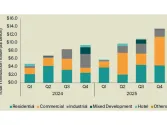
Engaged employees help retailers control loss and save millions
A survey has identified a strong link between employee engagement and controlling retail losses. But improving employee engagement is only one of many recommended best practices to help retailers sell more and lose less.
Shrink, comprised of shoplifting and organised retail crime, employee or supplier fraud and administrative errors, cost the global retail industry more than US$128 billion last year, according to the latest Global Retail Theft Barometer. This represents 1.29% of retail sales on average.
Shoplifting is the largest source of retail shrinkage in Asia Pacific countries, except for in Australia, where internal theft by dishonest employees accounted for most of the losses, reported the study, commissioned by Checkpoint Systems.
Meanwhile, another study concluded that improving employee engagement can have a significant impact on the bottom line of retailers by controlling retail loss. The findings are published in a report by the Efficient Consumer Response (ECR) Shrink & On-Shelf Availability Group, a research group supported by Checkpoint Systems.
Making the Link: The Role of Employee Engagement in Controlling Retail Losses is the first study of its kind to explore the relationship between employee engagement – measured across 18 factors – and four indicators of retail loss: shrinkage, waste, cash loss and lost sales driven by out-of-stocks.
The findings identified a strong correlation between higher levels of employee engagement and lower levels of retail loss among the 200,000 members of staff of European grocery retailers surveyed.
According to the study, out of stocks were twice as high in the bottom quartile of stores relative to the average of the stores in the remaining three quartiles. Waste was also twice the average in the bottom quartile of stores with shrink three times as great and cash loss seven times higher.
To understand the actual degree of causation, the study used statistical tools and analysis to identify the actual power of employee engagement in explaining the variation between the levels of loss in the bottom quartile and the average of the three other quartiles. The remarkable finding was that 42% of the higher level of out of stocks could be explained by the lower levels of employee engagement.
Using this analysis, the study indicates that if retailers could improve employee engagement in the bottom quartile of stores, they could achieve a 19.6% reduction in the lost profits from shelf out-of-stocks; a 12.5% decrease in shrinkage; a 9.8% reduction in waste and a 9.5% saving in cash loss. Taken together, these savings would deliver an incremental €380 million in additional profits to the European Grocery Sector, reported the study.
The study highlighted that effective communication, making staff feel valued and promoting teamwork are all important factors, while ensuring manageable workloads, providing development opportunities and taking ideas seriously are also vital to building a well-motivated team.
Neil Matthews, vice-president, Global Product Management, Checkpoint Systems, explained: “Staff who feel valued in their role and by their managers are more likely to adhere to the processes and procedures designed to minimise out-of-stocks.”
Holistic view of inventory losses
While having engaged, motivated and passionate associates and managers in stores is one of the best possible solutions for effectively managing loss, there are many other best practices that can help retailers sell more and lose less.
In a recently published article, Colin Peacock, the strategic coordinator of the ECR Europe Shrinkage and On-shelf Availability (OSA) Group outlined 15 best practices in recently published paper.
He recommended that there should be a holistic view of the inventory loss problem. A single loss prevention function should be held responsible for the overall management of both known and unknown losses across the whole supply chain, not just the stores.
With the loss prevention team focused on improving the supply chain and loss problem as a whole, the risk of any part of the supply chain trying to avoid scrutiny by simply moving losses from one form of loss to another is not possible, as overall loss is the key form of measurement used to hold all parts of the supply chain accountable.
All business functions should be part of the inventory loss prevention solution. For example, logistics can pick more accurately, buyers can manage range and promotions differently to lower the risk of loss, and marketing can design stores and customer loyalty programmes to lower the opportunity for theft and fraud. Including loss as a visible component of the company incentive plan helps ensure that all functions are aware of, and are working towards, an aligned loss target, while reducing the risks that each organisational silo in pursuit of their own functional goals can create.
The paper ‘15 Years and 15 Best Practices to help Retailers Sell More and Lose Less’ can be viewed at ecr-shrink-group.com.



















 Advertise
Advertise







